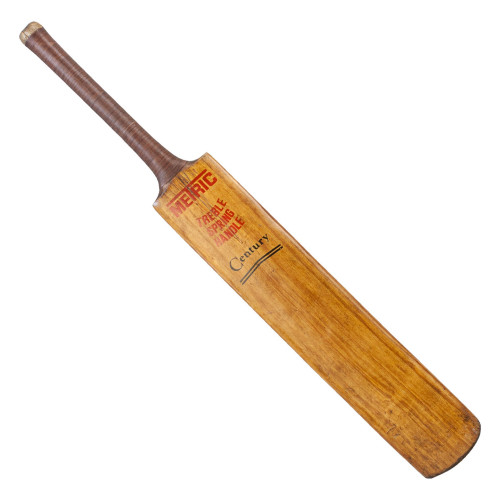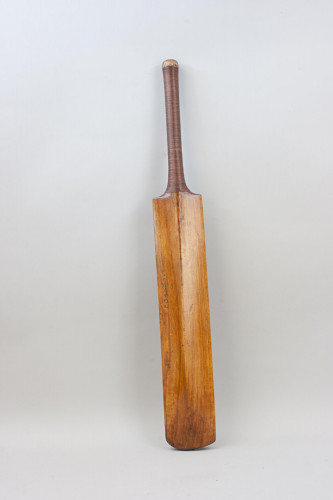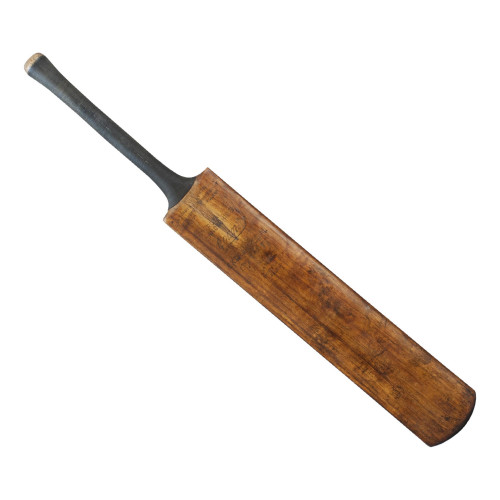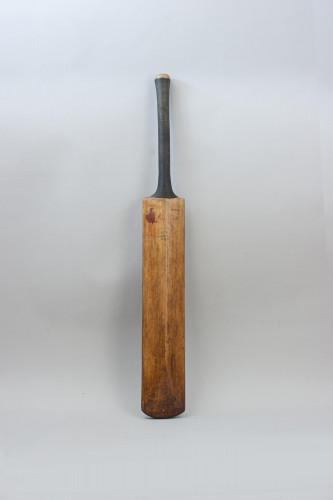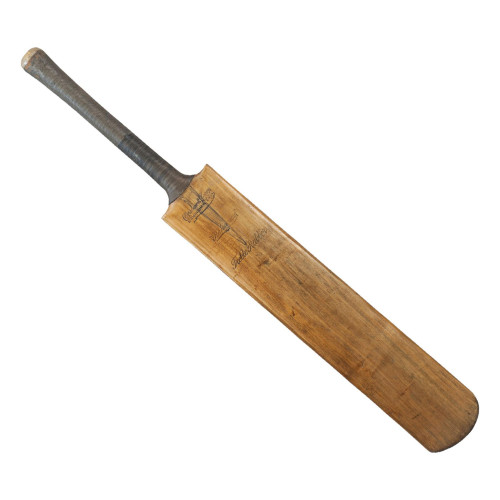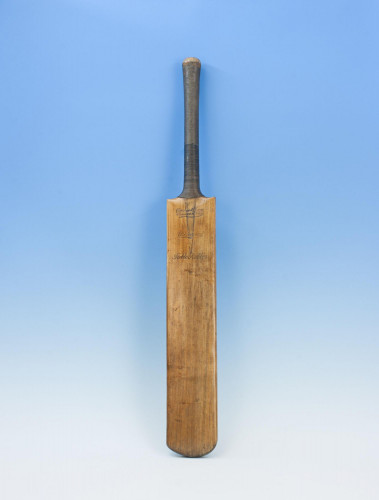Jack Hobbs Autographed Cricket Bat
Jack Hobbs Autographed Cricket Bat
Autographed Cricket Bat, Jack Hobbs.
A fine W.A. Woof cricket bat 'The Gardiner'. The bat is in good condition with cord grip and the blade stamped 'W.A.WOOF, Cheltenham, "The Gardiner", spring handle and a crown logo'. To the rear of the bat in ink are two signatures, 'JB Hobbs' and 'Jessop'. The previous owner of the bat believes the bat once belonged to Jessop but there is not proof.
Gilbert Laird Jessop (1874 - 1955) was an English cricketer, often reckoned to have been the fastest run-scorer cricket has ever known. He was Wisden Cricketer of the Year for 1898. Between 1894 and the outbreak of World War I in 1914, he played 493 First Class matches and represented England in 18 Tests, scoring over 26,000 runs with 569 of them coming in international matches. Jessop was an entertainer, a man whose ferocious hitting abilities delighted crowds and dismayed bowlers, a man whose scoring rate dwarfs household names like Hobbs and Bradman.
In his first innings for Gloucestershire in 1894 Jessop went in after lunch to face the very fast bowling of Mold; two wickets had just fallen in consecutive balls, but Jessop hit his first ball for four, and hit another boundary in the same over. Has any other batsman in the first over of his debut made his intentions so plain? This attack on the bowling was maintained throughout a career which lasted for 21 years. Within a few seasons of his debut his big hitting was drawing comparison with great hitters of the past such as Thornton and Bonnor, but it was not so much the length of his hitting as the frequency of it that was his real achievement.
Today the average county rate of scoring must be about 50 runs an hour, which means that the individual batsman scores at about half this rate. Great batsmen have reached much faster rates, On the evidence of a high proportion of their innings, WG Grace and Hutton scored at 36 runs an hour, CB Fry and FS Jackson at 40, Hobbs, Hendren, Clem Hill and Hammond at 43, JT Tyldesley, Compton, Bradman and MacLaren at 47, McCabe and Ranji at 50, Duleepsinhji, George Cox, Macartney at 52, RE Foster, Trumper and Woolley at 55. The evidence of all Jessop's 179 scores of over 50 (some one in five of all his innings) shows that he scored these innings at a rate of 79 runs an hour. His 53 scores of over 100 were scored at nearly 83 runs an hour.
His most famous innings came during the 5th Test against Australia at the Oval in August 1902. England were chasing 263 to win in the final innings but had been reduced to 48 for 5 when Jessop came to the wicket. In his characteristically swashbuckling style, Jessop immediately set about the Australian attack. A little over an hour later he was dismissed for 104. His 76-ball, 77-minute century is one of the fastest ever- had the rules of cricket awarded a 6 rather than a 4 when a ball cleared the boundary in 1902 as they do now, the statistics would be even more staggering. A bowler as well as a batsman, Jessop took over 800 First Class wickets before developing a serious heart problem whilst serving in World War I, which prevented the resumption of his career in 1919
Information from espncricinfo.com & Christ's College websites.
Dimensions:
1900-1949
C. 1930
Willow
England
JB Hobbs and Jessop
Thank you for your enquiry.
We will get back to you soon.
Please create wishlist to add this item to
RELATED ITEMS
















